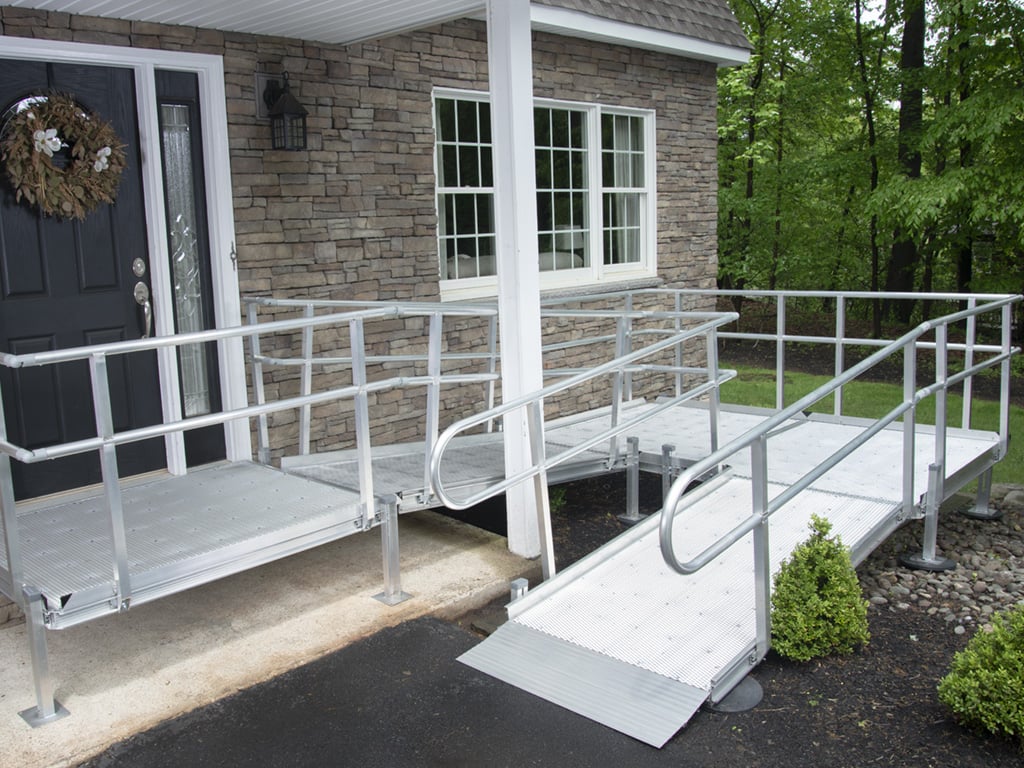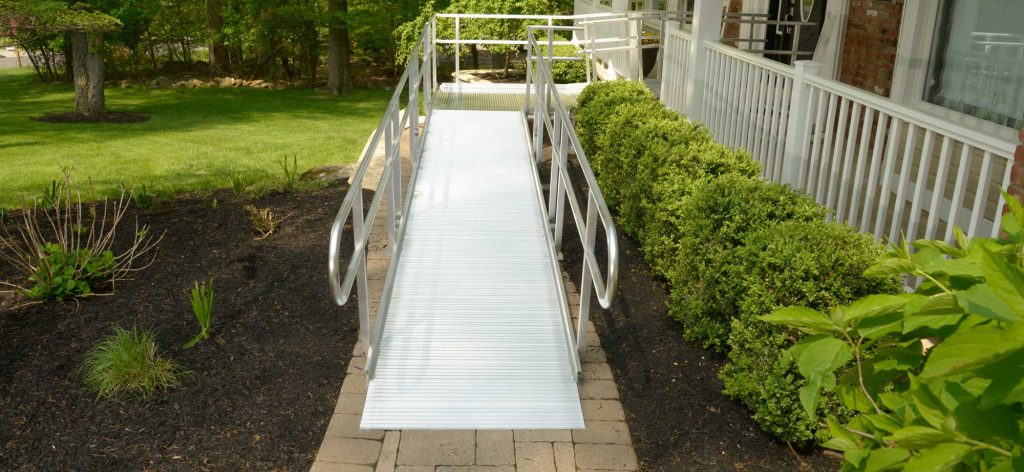
6 Ways to Get the Most Out of Your National Ramp Assessment
We understand that the ramp process can feel overwhelming and time-sensitive. To make sure that your ramp assessment is as productive as possible, we have put together a list of things to know, gathered from our experience helping others just like you.
#1 Understand Your Needs
#2 Consider others at the Home
#3 Keep ADA Guidelines in Mind
#4 Clear Approvals With All Parties
#5 Pick the Ramp Style that Meets Your Needs
#6 Know the Next Steps

#1 Understand Your Needs
Before your appointment with a National Ramp dealer to evaluate your property for a ramp, have a good understanding of your needs. Review the following questions before your assessment to get the most out of your appointment.
- Who will be using the ramp, and how?
- What mobility devices and medical equipment will be used on the ramp?
- Is that expected to change in the future?
- Where are the ideal starting and landing spots for the ramp?
- Am I willing to remove handrails, cut bushes or relocate a flower bed, if needed, to make room for the ramp?
- Are there any major structural changes (adding a door, replacing a porch) to be done before the ramp installation?
- Are there multiple doors where a ramp can go?
- These questions will help give the dealer the most information they need to design the ramp that will meet your needs.
#2 Consider Others at the Home
You may have one person living at the home who uses a mobility device, and another who has endurance issues related to a heart condition. While the ramp is essential for the person needing the mobility device, walking the length of the ramp may be too burdensome for the other person at home. In this instance, the dealer will need to devise a layout that affords access to both people.
The ramp should not interfere with any shared entrances among multiple tenants.
When designing the layout, the dealer may also need to consider head clearance for awnings and clearance for gas meters. The ramp layout must allow all others who may be on your property, from letter carriers to HVACR technicians can perform their jobs without interference.
#3 Keep ADA Guidelines in Mind
The Americans with Disabilities Act (ADA) is a law that protects the civil rights of people who are disabled. One component of the law is a requirement that all disabled people have open access to public spaces, including ramp dimensions.
While private, residential ramps do not need to adhere to ADA guidelines under federal law, there are legitimate safety concerns that are addressed by these guidelines. The dealer will suggest that your ramp meet ADA guidelines as close as possible for the safety of all using the ramp.
One of the biggest sources of conflict we see in the evaluation process relates to the amount of ramping needed for ADA compliance. ADA requires a ramp to be at no more than a 1:12 pitch – where for every inch of elevation, you need 12 inches of ramping; this gives the ramp an angle of 4.8°.
Your mobility device may be approved to go higher than 4.8°. The dealer will offer you a layout that is safe for your device and your future needs.
The bottom line is that a longer ramp is a safer ramp.
For more on ADA guidelines, visit ADA Guidelines here at National Ramp.
#4 Clear Approvals With All Parties
If you rent your home, rent the lot your home is on, or live in a development overseen by a Homeowner’s Association (HOA), the landlord, property manager or HOA board will need to approve the ramp.
Depending on where you live, the ramp may need a permit, and your local municipality may require that the ramp keep to ADA guidelines, have vertical picket railings, or maintain certain setbacks from the sidewalk.
Obtaining these approvals and verifying any requirements is your responsibility. Checking for this before the assessment appointment can save you a lot of time and money later in the event the property owner demands the removal of the ramp, or if the town wants it reconfigured.
#5 Four Ramp Styles, Think Ahead
The main benefit for all styles of ramps manufactured by National Ramp is the modular design. Modular means the ramp is composed of smaller pieces fit together at your home: This allows for flexibility with both the ramp’s design and installation. It also means that the ramp is installed and removed easily.
Each ramp system manufactured by National Ramp has a slightly different maintenance schedule.
The aluminum ramps require very little maintenance. The Liberty Series™ will need a bit more attention during snowy weather than the Breeze System™, but otherwise, both systems offer a lifetime of use without rusting or corrosion.
While the Victory Series™ is composed of pressure-treated wood, all wood needs to be painted and sealed on a regular schedule to delay rotting.
The Triumph Series™ steel ramp features open-mesh decking that allows rain and snow to pass through, but steel ramps require maintenance to prevent rusting.
Once the ramp is installed, you must monitor and maintain the ramp. If you don’t think you or someone at your home will be able to keep up with the maintenance of the wood Victory Series™ or open-mesh steel Triumph Series™ ramp, then you can focus your selection on the solid aluminum Liberty Series™ or open-mesh aluminum Breeze Series™ ramps.

#6 Know the Next Steps
The installation timeline will depend on your dealer’s availability and inventory. Some of our dealers keep their warehouses in stock, while others will place custom orders for each ramp. Be sure to ask your evaluator how much lead time they’ll need to schedule the installation once you approve the ramp layout.
If the dealer needs to order your ramp components, rest assured that National Ramp will ship them out the same day the order is placed, to make sure you get Freedom Now!
Site preparations may be needed before the installation is complete, which could be removing handrails, clearing landscaping, or removing an existing ramp. Document if you will handle any site preparations or if the installer will complete the work.